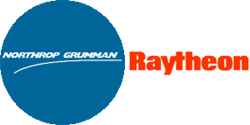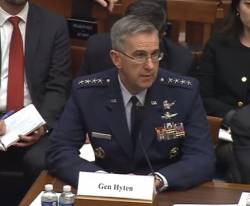
On Wednesday (December 17, 2014) Raytheon Company announced successful completion of the fourth of five planned launch and early orbit exercises being undertaken together with Lockheed Martin to demonstrate new automation capabilities, information assurance, and launch readiness of the U.S. Air Force’s next generation GPS III satellite and Operational Control System (OCX).
On Wednesday (December 17, 2014) Raytheon Company announced successful completion of the fourth of five planned launch and early orbit exercises being undertaken together with Lockheed Martin to demonstrate new automation capabilities, information assurance, and launch readiness of the U.S. Air Force’s next generation GPS III satellite and Operational Control System (OCX).
The announcement came shortly after Air Force Space Command and the GPS Directorate revealed large cost overruns in OCX and further delays in its completion due to underfunding of the civil component of the program by Congress.
Successful completion of Exercise 4 on October 3 represents a key milestone demonstrating the end-to-end capability to automatically transfer data between Raytheon’s OCX and Lockheed Martin’s GPS III satellite, Raytheon said. One additional readiness exercise, five launch rehearsals, and a mission dress rehearsal are planned prior to launch of the first GPS III satellite with OCX.
The exercise used the latest baseline of Raytheon’s OCX Launch Checkout System (LCS) software featuring integrated information assurance functionality for the first time and the latest version of Lockheed Martin’s GPS III satellite simulator. Exercise 4 also demonstrated mission planning and scheduling capabilities with the simulated Air Force Satellite Control Network (AFSCN) for the first time, including a replan scenario that would occur in the event of a launch slip.
The system also automatically generated antenna-pointing angles for the simulated AFSCN, which until now have been manually generated. Exercise 4 expands on three previous exercises, introducing maneuver planning and reconstruction capabilities, as well as advanced planning and scheduling with AFSCN assets. The automation of these capabilities will allow GPS operators to spend their time optimizing system performance rather than focusing on routine operations.
"As part of establishing the LCS Block 0 baseline, the completion of Exercise 4 demonstrates the capability of OCX to successfully support a GPS-III satellite launch in an information assurance hardened environment," said Matthew Gilligan, Raytheon vice-president and GPS OCX program manager. "Exercise 4 began the instantiation of vital OCX automation capabilities that give operators their time back in order to focus on mission critical activities, one of the important elements of a modernized GPS."
"Launch Exercise 4 demonstrated the team’s ability to complete nearly 100 percent of the GPS III space vehicle 1 launch and early orbit mission sequence," said Mark Stewart, vice president for Lockheed Martin’s Navigation Systems mission area. "The findings the team made during this robust launch exercise will help mature the processes, procedures, and tools necessary to enter our rehearsal phase and ultimately the launch and checkout mission."
GPS III satellites will deliver three times better accuracy, provide up to eight times improved anti-jamming capabilities, and include enhancements that extend spacecraft life to 15 years, 25 percent longer than the newest Block IIF satellites. GPS III will be the first generation of GPS satellite with a new L1C civil signal designed to make it interoperable with other international global navigation satellite systems. The first GPS III satellite is currently undergoing integration and testing, with final space vehicle delivery planned for late 2015.
OCX is being developed in two blocks using a commercial best practice iterative software development process, with seven iterations in Block 1 and one iteration in Block 2. Exercise 4 was conducted using the recently completed Iteration 1.5 software, representing an early delivery of the final software baseline. Exercise 5, scheduled for 2015, will include critical information assurance features needed to support launch of the first GPS III satellite.






